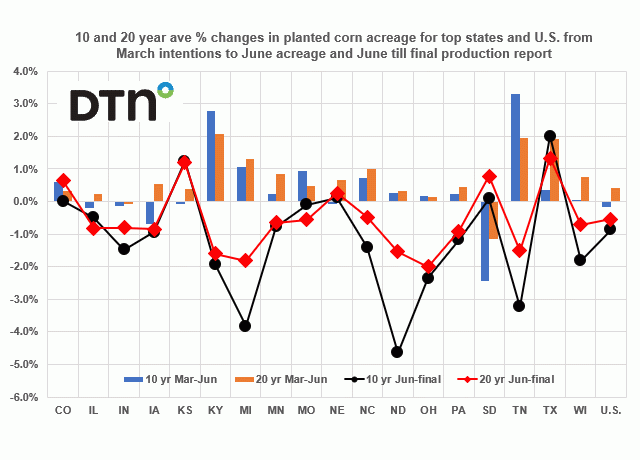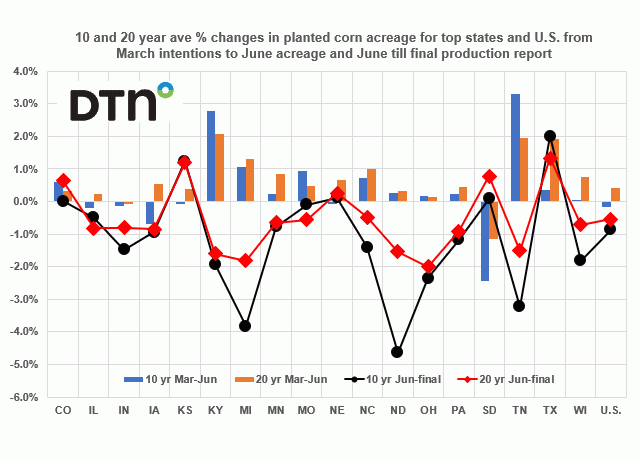Fundamentally Speaking
Corn Planted Acreage Changes
Attention will be focused on USDA's planted acreage and balance sheet estimates for the 2022/23 season when these are released at their annual Ag Outlook Forum this week.
With corn and soybeans at their highest levels in at least eight years and global ending stocks forecasts on the way down due to the severe droughts hitting much of South America, there is an urgent need for U.S. farmers to expand seedings of both crops this spring, though the question is which one will have the upper hand.
After the USDA economists issue their planted acreage projections, they will survey a number of farmers on what their planting intentions are and release those March 31.
These figures will be updated at the end of June and then a final figure will be given in the annual production report in January.
P[L1] D[0x0] M[300x250] OOP[F] ADUNIT[] T[]
There can be large differences between the March Prospective Plantings, June Acreage, and final production numbers for planted area of the major crops, especially in corn where changing prices and Mother Nature can have a large say in what farmers intend to put in the ground and what they actually seed.
This graph shows the 10 and 20-year average percent changes in planted corn acreage for the top 18 growing states and the U.S. from the March intentions to the June acreage reports and then the June Acreage figures until the final production report numbers.
We should note that after corn plantings fell by 3.3% in the US from the March intentions to the final production report in 2019 and an even sharper 6.5% in 2020, last year the corn seeded figure increased by 2.213 million acres (2.4%) from the March intentions to the final production report, the biggest jump since 2007.
With regard to March to June changes, SD has the largest 10 and 20-year annual changes at 2.5% and 1.1% lower as most other states usually see acreage increase from March to June.
For the June to final report acreage, ND and MI have the largest 10 and 20-year percent declines with TN and WI in the mix also.
No surprise that the northern states tend to see actual corn planted area fall from what is indicated in first the March intentions report and then later from the June Acreage numbers as weather can really play havoc with corn seedings as seen in recent seasons.
Note actual corn planted area in North Dakota from the March to the final figure fell by 39.1% in 2020 after a 13.6% drop the prior year, while in SD the 2020 drop was 18.3% which is actually less than the huge 27.5% plunge seen in 2019 from the March intentions to the final figure.
Last year increased by 24.2% in ND and by 9.8% in SD as the saturated soils at plantings in 2019 and the year after replaced by dryness last year during seedings which unfortunately continued throughout the growing season.
Again it seems logical to pay attention to corn planting progress this year up in the Dakotas especially since they account for a much larger share of U.S. corn acreage and production now than seen 20 or even 10 years ago.
(c) Copyright 2022 DTN, LLC. All rights reserved.





Comments
To comment, please Log In or Join our Community .